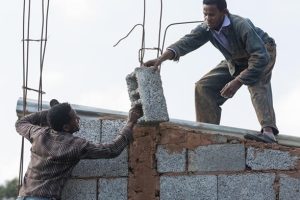
Apart from being a country blessed with numerous climatic zones ranging from a low land below sea level (Dallol) to mountains (Ras Dashen), Ethiopia is also the home of various cultures, traditions and values which can be used as cornerstones of nation-building and mysterious magnets that bring the people together in days of glory and grievance. It is a blessing for Ethiopia to be a land of origin and diverse people with enormous values and culture.
The country is rich in terms of both tangible and intangible heritages and a portion of which are registered by UNESCO. These days, in particular, the emphasis given to intangible heritages is improving. The most notable ones in this regard include the Irreecha, Fiche Chembelala, Ashenda/ Ashendeye/Shendye/Solel, and the likes.
Though the fundamental objective of the festivals is associated with thanksgiving, spiritual gains, promoting equality, and harmonies coexistence, it has been witnessed that some groups try to misuse them for their tribal political interest. But their intrinsic values are so crucial to promoting virtue in society.
Sertsefre Sibhat, Art Sector Vice Head of the Addis Ababa Culture and Tourism Bureau said that the counties of Mexico, Cuba, and Brazil had integrated and brought various cultures to their metropolis. This has helped them to become preferred tourist destinations and promote their cultures across the globe.
Thus, the Ethiopian government should bring together such precious cultures and values from every corner of the country and display them in the capital to maintain peace and stability, increase tourist flow and promote the country’s culture to the international community.
In Ethiopia, particularly in urban areas, foreign cultures like April the Full, Valentine’s Day, Color Day, and Crazy Day dominate over the indigenous cultures and values. Our indigenous values seemed to have been forgotten. To avert this, there is enormous task ahead of us in promoting and applying our forefathers’ virtue for constructive purposes, most notably for strengthening people to people relations and tightening the noose on tribalism.
Recently, following the statement of the Oromia State on the celebration of Irreecha in Addis Ababa in the upcoming Ethiopian New Year, there has been the dissemination of suspicious news which triggers emotion among the diverse nations. Be it as it may, however, if the celebration of the festival promotes humanity and is free from the political interest of certain groups.
Hence, it even should be celebrated nationwide, let alone in Addis, the capital. Because the culture of integrating values and exchanging them in a proper manner lays the foundation to create unity among regional states and realize the goal of creating a single economic community.
As long as festivals bear something to humanity, there is no mere ownership of them based on race, ethnicity, nation, and clan. They are rather the values of the whole nation though they are originated from a certain group. That is why the world established UNESCO in charge of preserving such and such cultures.
Then, what is Irreecha? As documents, Irreecha (Afaan Oromo: also called Irreessa, is Thanksgiving holiday of the Oromo People in Ethiopia. The Oromo People celebrate Irreecha to thank Waaqa (God) for the blessings and mercies they have received throughout the previous year. The thanksgiving is celebrated at the sacred grounds of Hora Harsadi (Lake Harsadi), Bishoftu, Oromia.
The Irreecha festival is celebrated every year at the beginning of Birraa (Spring), new season after the dark and rainy winter season. Irreecha is celebrated in East Shewa Zone and around the world where diaspora Oromos live especially North America and Europe.
The Oromo People consider the winter rainy season of June to September as the time of difficulty. The heavy rain brings with it lots of things like swelling rivers and floods that may drown people, cattle, crop, and flood homes. Also, the family relationship will severe during winter rain as they can’t visit each other because of swelling rivers.
In addition, wintertime could be a time of hunger for some because of the fact that the previous harvest collected in January is running short and the new harvest is not ripe yet. Because of this, some families may endure food shortages during the winter.
In Birraa (Spring in Oromo land), this shortage ends as many food crops especially maize is ripe and families can eat their fill. Other crops like potato, barley, etc. will also be ripe in Birraa. Some disease types like malaria also break out during rainy wintertime. Because of this, the Oromo see winter as a difficult season. It does not mean the Oromo People hate rain or winter at all. Even when there is a shortage of rain, they pray to Waaqa (God) for rain.
The other amazing festival annually celebrated by Amhara and Tigray people is Ashendeye/Ashenda/Shadey. The Tigrayans use Ashenda while the people of Seqota, Lasta, and Qobo of Amhara down south from Tigray opt to say Shadey, Ashendye, and Solel.
Recently, Ministry of Culture and Tourism (MCT) announced that celebrating traditional festivals like Ashenda, Shadey, Ashendye, and Solel in the metropolis would play a great role in attracting a large number of tourists, promoting the country’s culture to the over sea community and strengthening the long-standing cultural coexistence among Ethiopians.
As scripts indicate, Ashenda or Shadey is a festival celebrated starting from August 23 in the Ethiopian regions of Tigray and Northern Amhara. Ashendeye marks the end of two-week-long fasting when adherents of [Orthodox Christianity] gather to the Virgin Mary.
The name of the festival Ashenda comes from the name of grass that the girls make a skirt and wear it around their waist as a decoration. The young women and girls dress the best traditional dresses called tilfi which is a cotton dress decorated with amazing embroidery from the neck to toe in front of the dress. The girls also adorned themselves with an array of beautiful.
It is a holiday celebrated on every August 16 in Ethiopian calendar to commemorate the resurrection of Saint Mary. It is celebrated on the end of one of the most important fasting of the Ethiopian Orthodox Church the “Filseta Ttsom” it lasted for 16 days. This holiday has both religious and cultural importance. This event is mostly for girls and young women, which they await very eagerly every year. It is a unique festival that young ladies and girls enjoy music and dance.
Apart from its cultural and religious significance, the festival with its different names could play a crucial role in fostering equality of women and adds some sort of sensuous beauty to the onlookers. Thus, statesmen, Ministry of Culture and Tourism, are needed to highly invest on these cultures as part of people to people relation and thereby build a diversified strong country which also will be benefited from the increment of tourist flow in the aesthetic sector.
The Ethiopian Herald August 15, 2019
BY LAKACHEW ATINAFU





